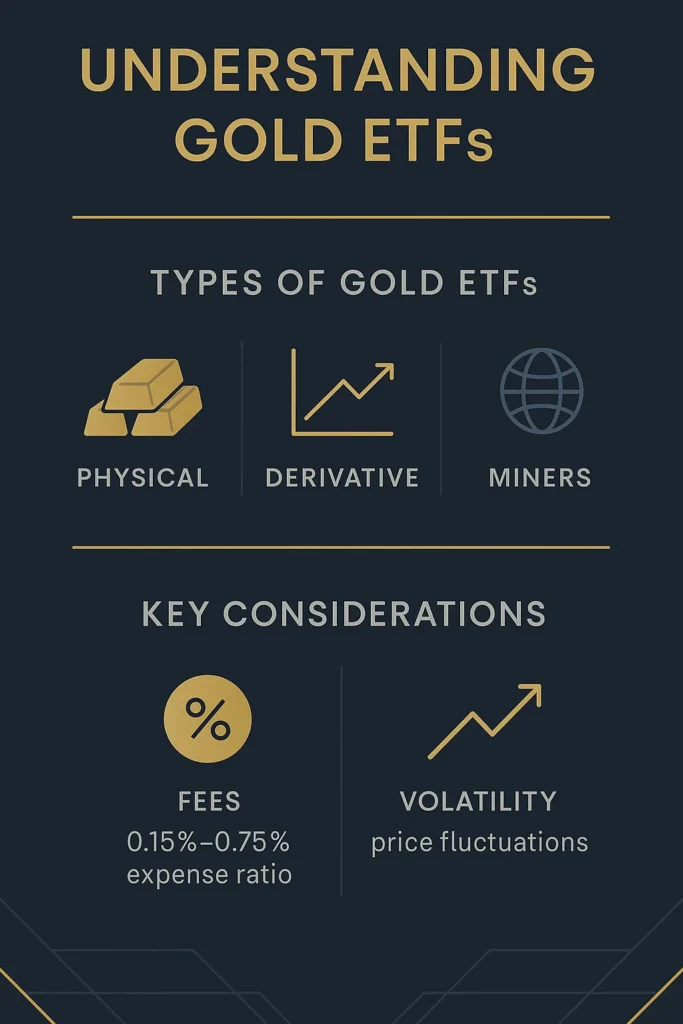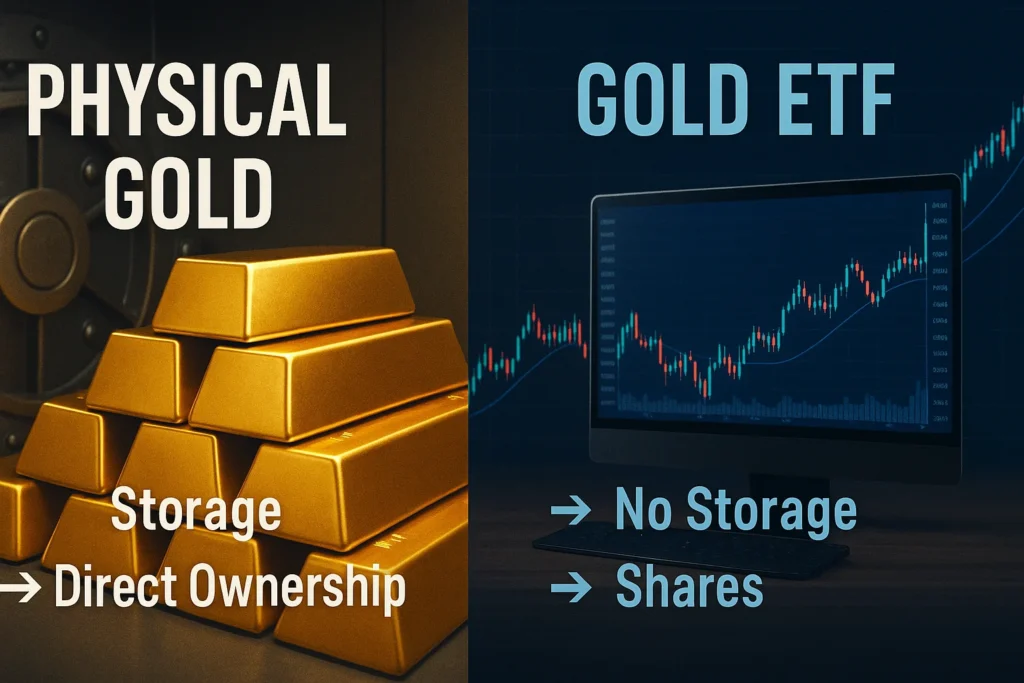Gold ETFs let you invest in gold without owning the physical metal. They track gold’s price, so your investment value changes with gold.
Quick Summary: How Gold ETF Works
- You will understand how Gold ETFs mirror gold prices.
- You will learn about different types, like physical or derivative-based funds.
- You will see the benefits, such as easy trading and portfolio balancing.
- You will know the risks, like market swings and fees.
Estimated reading time: 6 minutes
Want to invest in gold but avoid storing heavy bars? Gold ETFs offer a simple way. These funds let you gain exposure to gold’s price changes easily. They are a popular choice for many investors.
What Are Gold ETFs?
Gold ETFs are special investment funds. They trade on stock exchanges, just like company stocks. Their main goal is to follow the price of gold very closely.
This means when gold prices go up, the ETF’s value usually goes up too. When gold prices fall, the ETF’s value typically falls.

These funds give you a way to invest in gold without needing to buy or store actual gold. You own shares in the fund, not the physical metal itself.
How Gold ETF Works
When you buy shares of a Gold ETF, you are buying a small part of the gold the fund holds. This gold is often kept in secure vaults. For example, funds like SPDR Gold Shares (GLD) and iShares Gold Trust (IAU) hold real gold bullion. Each share you own represents a set amount of this gold.
Some ETFs use other tools, like futures contracts, to track gold prices. These are called derivative-based ETFs. There are also ETFs that invest in gold mining companies. These do not track gold’s price directly. They track the success of the companies that dig for gold.
The way how gold ETF works is simple: the fund buys gold, and its shares reflect gold’s value. You can buy or sell these shares easily during market hours.
Buy Gold Online: The Smart and Secure Way
Discover the safest and most reliable strategies to buy gold online. Make informed investment decisions and secure your financial future today!
Learn MoreWhy Choose Gold ETFs?

Gold ETFs offer several advantages. They are very convenient. You can invest in gold without the hassle of physical storage or handling. This is a big plus compared to buying gold bars or coins. If you are wondering where to store gold, ETFs remove that worry.
They also help with diversification. Adding gold to your investments can spread out risk. Gold often performs differently from stocks and bonds. This can make your overall portfolio more stable. Gold can act as a safe haven during recession.
Gold ETFs are liquid. You can easily buy and sell shares on major exchanges. This makes them simple to trade. They are also cost-effective, especially for smaller investments. Their fees are usually lower than actively managed funds.
Things to Watch Out For
Gold prices can change a lot. This is called market volatility. The value of your Gold ETF can go up and down quickly. This can be a challenge if you want steady returns. Understanding gold price factors can help.
Gold ETFs also have fees and expenses. These are management fees that reduce your net returns. While generally low, they still impact your profit. Some ETFs that use derivatives can have extra risks. These might include tracking errors, meaning the ETF does not perfectly match gold’s price.
- Understand Types: Know if your ETF holds physical gold or uses contracts. This affects risk.
- Check Fees: Look at the annual expense ratio. Lower fees mean more money for you.
- Watch Volatility: Gold prices can change fast. Be ready for ups and downs.
- Diversify: Use Gold ETFs to balance your portfolio, not as your only investment.
Gold ETFs: What’s Next?
Many experts expect Gold ETFs to remain popular. Large investors, like institutions, are putting more money into them. They see gold as a safe place for their money. This demand helps support higher gold prices. Global gold ETF holdings were around 3,541 tons in May 2025, showing continued interest, as reported by the World Gold Council.
Central banks around the world are also buying more gold. This trend can also push gold prices up. Changes in money policy, like interest rate cuts, can affect gold prices too. This is because they can change the strength of the dollar and how much risk investors are willing to take. Experts at SSGA predict continued financial inflows into Gold ETFs.
Gold ETF Fee Impact Calculator
Your Money Without Fees: $0.00
Your Money With Fees: $0.00
Fee Impact: $0.00
Conclusion
Gold ETFs are a simple and effective way to invest in gold. They offer convenience, help diversify your investments, and are easy to trade. While gold prices can be volatile, Gold ETFs remain a popular choice for many investors.
